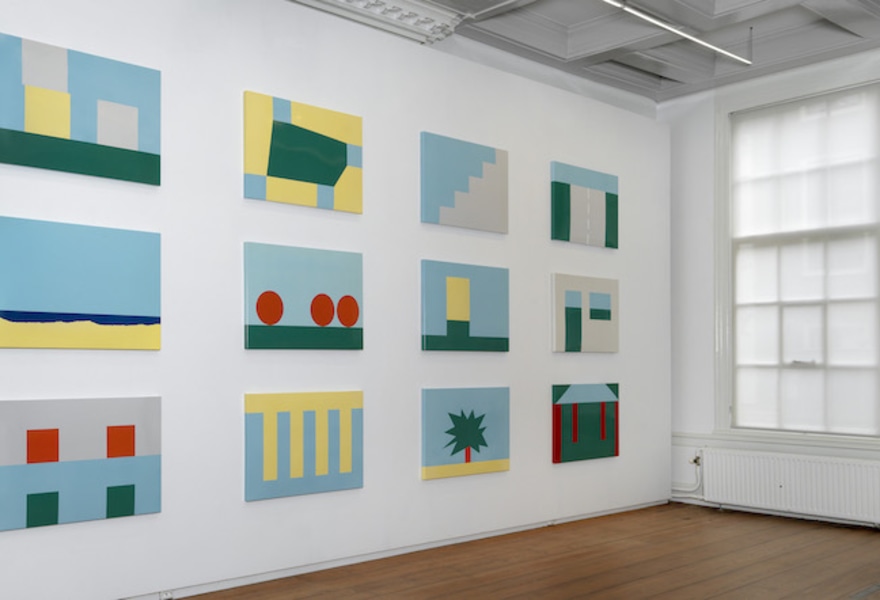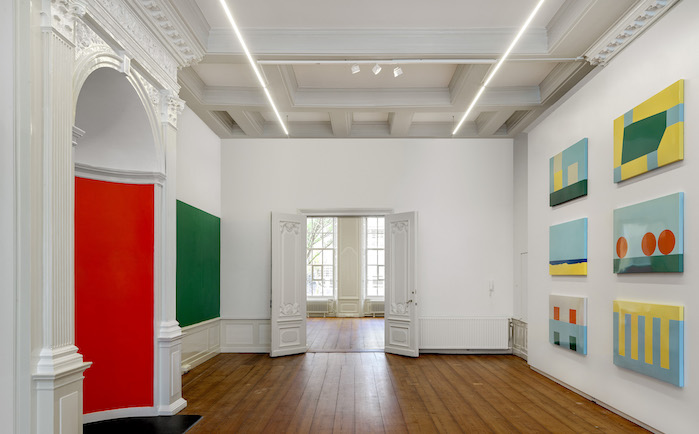19 november 2021, Flor Linckens
Rafaël Rozendaal: Paintings without paint
Until 18 December, Upstream Gallery is presenting the exhibition 'Mechanical Paintings' with works by Rafaël Rozendaal. This Dutch, New York-based artist is known for the ways in which he uses the internet to create digital and physical artworks: from NFTs and websites to tapestries and lenticular prints.
This combination of digital and analog work is perhaps a reflection of the ease with which we switch between digital and analog worlds in our daily lives. In this age of zoom meetings, Instagram, video on demand and online shopping sessions, we spend so much time in a digital world that we occasionally forget that our mind is actually part of a physical body. In his work, Rozendaal makes the digital surprisingly tangible.
He previously made a series of analog tapestries (“Abstract Browsing”) that showed abstract representations of well-known websites, such as Google and Dropbox. That process starts on a computer: to obtain the abstract image, the artist creates (computer) code that converts all information on a website — from text fields to advertisements — into the geometric elements of the website structure. For his latest series of works, Rozendaal was once again looking for traditional techniques to make the virtual world more tangible. For the “Mechanical Paintings” series in this exhibition, he opted for an application of enamel on steel, an imperfect medium that is based on an artisanal technique that is often passed down from generation to generation. The basis for these works also lies in digital drawings. Both materials, tapestry and enamel, are marked by a tactile texture and materiality, but this time, there is no paint involved.
Visually, his abstract 'paintings' refer to the early internet, which Rozendaal considers to be a more innocent time that wasn’t characterised by a politicisation and commercialisation of the internet, at least not to the extent that it is now. He also added elements that refer to games, everyday objects and even landscapes. Art history also plays a determining role in his work, and the observant viewer will regularly spot references to artists including Malevich and Mondrian. Rozendaal's use of colour dates from a time when image quality relied heavily on the devices on which the work was shown — so it had to be an important consideration for the artist. Rozendaal continues to use these bright, saturated colours in contrasting and playful combinations. Today, screens offer much more options in terms of hues and brightness, which means that an older work may be presented differently now, compared to when it was first shown. But the colours on enamel are essentially permanent, which means that he’s effectively capturing a temporary presentation in a perpetual form. The resulting images reflect a certain dynamic, as if any element could starting moving at any moment, perhaps in part because Rozendaal's earlier work has created a certain expectation.
Rozendaal's work is so intrinsically linked to the internet that he had the word tattooed on the inside of his lower lip. The artist has a democratic vision and believes that you can experience art as authentically in a gallery or museum as on your computer or smartphone. Rozendaal began his career in the early 2000s, when he started creating single page websites. He always sells them with the same contractual small print: the website must always remain accessible to a wider audience. The collector's name is included in the source code and is usually visible to the viewer in the title of the page when you open your browser history. The total of his websites — now well over a hundred — is visited by more than fifty million visitors every year. On websites with often comical names (from whitetrash.com, flyingfrying.com and popcornpainting.com) you can use algorithms to spin Duchamp's famous bicycle wheel, endlessly unroll toilet paper or, like a modern-day Sisyphus, toss endless waste paper into a garbage can, only to see it thrown back out. But most of his websites are abstract images that (equally) invite interaction. He also made a script for the Whitney Museum that provides the museum website with a semi-transparent layer, that seems to refer to the sun and plays with the visibility and readability of the website. Along with Jonas Lund, Rozendaal also released a free Google Chrome plug-in. With 'Text Free Browsing' you can turn off all text on the internet, enabling you to scroll past your favourite websites without any visible text.
Rozendaal has exhibited his work all over the world, from New York's Times Square, Centre Pompidou, the Whitney Museum, the New Museum, the Hammer Museum, Casa Franca Brasil Rio and Seoul Art Square to the Stedelijk Museum in Amsterdam. His work has been included in the collections of, among others, the Whitney Museum, Museum Voorlinden, the Stedelijk, the Textielmuseum, the KRC Collection and the Towada Art Center. To the general public, he is perhaps best known as the person behind the Bring Your Own Beamer (BYOB) concept, which was chosen as the theme of the internet pavilion at the 2011 Venice Biennale.



